Contiguous Bored Piles: 4 FAQS [What, How, Why and Advantages]
Piles are the type of foundation systems that are usually perceived to reinforce building foundations. This is usually achieved by the ability of the pile to transfer load from the building above to the foundation below. Alternatively, they can also serve as a function of retaining walls, when they are placed continuously against the mass of soil to resist soil pressure.
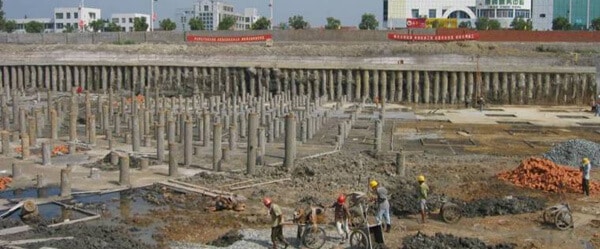
In this article, we will explore the state of the art of this technology, how it is made, why you should opt for it, and what is its advantage over other types of systems.
Contents
What is a Contiguous Bore Pile
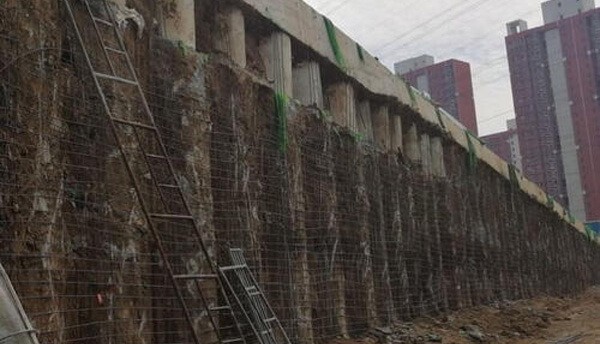
These types of piles are constructed using CFA, CSP, and LDA techniques.
They are series of piles that are placed very close to each other. The distance is so close that piles’ faces usually touch each other.
Sometimes, a wall is also constructed to guide the orientation of piles horizontally and vertically. Sometimes there can be small gaps in the pile of the range around 50 to 150 mm. The soil in these gaps can be grouted with concrete or sealed from a watertight wall. A secondary lining is added to provide permanent finishing to the wall.
An alternative term used for contiguous piles is soldier pile arrangement.These piles can be bored to certain depths in the soil depending on the technologies. A diameter of 1500mm to a depth of 32m can be achieved using CFA piling.
On the other hand, diameters of 2800mm to a depth of 65m using LDA piling technology can be achieved.
What Are Construction Techniques Used For Making Contiguous Bored Piles
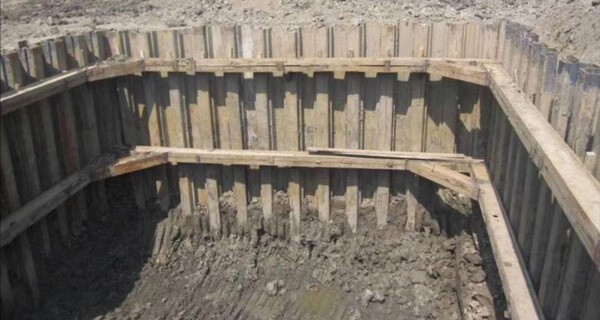
There are three most commonly used construction techniques for Contiguous bore piles:
- CFA (Continuous Flight Auger)
- CSP (Cased Secant Piling)
- LDA (Large Diameter Auger)
CFA (Continuous Flight Auger)
Continuous flight auger (CFA) piling is the technique in which piles are drilled and concreted in a single continuous operation hence allowing much quicker installation times than simply bored piles.
First, the steel cage is placed, followed by the pouring of wet concrete. This enables the pile to resist a range of structural loads. This technique is suitable for construction in most types of strata like sand, gravel, silt, clay, and soft rocks.
CSP (Cased Secant Piling)
The cased Secant Piling (CSP) system utilized the much cost affect continuous flight auger technique with heavy-duty casings that are otherwise linked to traditional methods like rotary bored piling methods. This method is more commonly employed for secant piles.
Similar to CFA, it can be almost employed in any type of soil condition.
LDA (Large Diameter Auger)
Large Diameter Bored piling technology employs powerful hydraulic rigs to construct large diameter piles. They use interchangeable attachments like augers, core barrels, and buckets.
This type of construction technology is also suitable for various types of soil conditions and can be applied to both types of piles: contiguous or secant.
Steps of construction
Following steps are usually followed in each technique listed above to make contiguous bored piles. Note that these steps are for the construction of a single pile. They are repeated again and again to construct more piles.
Positioning: First of all, wooden pegs are used to locate the center position of each pile to be bored. The gap between the two piles is also outlined at this stage.
Case Installation: The next step is the installation of the case using a Vibro-hammer, that drives a casing into the ground. It leaves about 1-meter length of the casing for protruding above the ground.
Augering of borehole: A drilling tool name Auger cuts and removes the earth inside the casing for forming a borehole. The case supports the soil surrounding the borehole. In cases, when the casing is not long enough to support the borehole, bentonite slurry can also be used as support against the soil.
Installing steel cage: After the hole is made, a crane lift the steep cage and place it down the borehole.
Pouring concrete: After placing the steel cage concrete is poured down the hole to form a pore pile.
Casing Extraction: The last step is removing the casing from the ground, which is done using a Vibro-hammer.

There are three most commonly used construction techniques for Contiguous bore piles:
- CFA (Continuous Flight Auger)
- CSP (Cased Secant Piling)
- LDA (Large Diameter Auger)
What Are The Advantages Of Contiguous Cored Piles

There are numerous advantages associated with contiguous bore piles:
- They are easier to build in a variety of loading and soil conditions and may not require a guide wall to control the alignment issues.
- In contrast to diaphragm walls, this is a much economical solution as a retaining structure.
- In contrast to diaphragm walls, which have units of bigger geometry, contiguous bored piles have the unit as a single pile. A single pile has a small cross-sectional length. This allows achieving much more flexible geometries than the diaphragm walls.
- They have more load-bearing capacity than the diaphragm or retain wall. Of course, this depends on the amount of reinforcement inside them.
- They can be installed in difficult ground conditions like in areas that are more prone to liquefaction.
- They are the perfect option for metropolitan areas, which have a higher cost associated with the land.
- Due to the reduced amount of cost and time associated with the contiguous bored piles, they are considered to much more economical solution than the diaphragm walls.
- They are a much more suitable option in the area of dense urban populations or adjoining properties. In those areas, other methods would not be possible to implements without the encroachment of nearby land. This method relies on vertical expansion.
- If in the nearby areas or surrounding there are footings and underground utilities of other building, it would be difficult to with traditional retaining methods. This constraint makes a contiguous pile wall the ideal choice for supporting an excavation.
- These piles have much faster construction time than the secant bored piles.
What is The Difference Between Contiguous Piles And Secant Piles
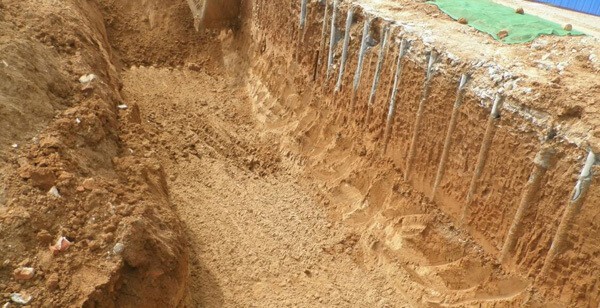
- Contiguous piles consist of series of piles that are almost touching each other with gaps ranging from 50 to 100 mm.
On the other hand, in the case of secant piles, series of piles are placed with the spacing of a single pile diameter apart. That is why they are termed as secant piles.
- Both types of piles can be adopted for any type of soil condition.
However, contiguous piles will find most of their application in areas of cohesionless soil. This is mainly due to the inability of the soil to temporarily arch across large spans of piles. A soil with better cohesion properties can be retained using secant piles.
- In the case of contiguous piles, the final basement level is usually above the groundwater table while in the case of secant piles the final basement level can be below the groundwater table.
- In both cases, the retained soil is shotcrete to avoid any loss of retainment of soil.
Conclusion
To conclude this article address four key questions about the contiguous bore piles: What are contiguous bored pile? What are Construction techniques used for making contiguous bored piles? What are their advantages and How they differ from secant piles?
In addition to this article also list down the step of the construction of piles.
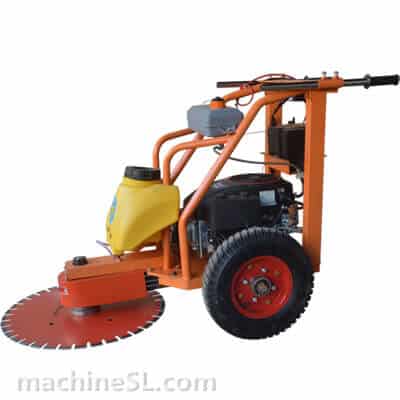
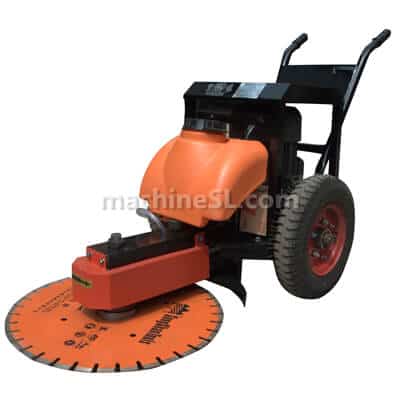
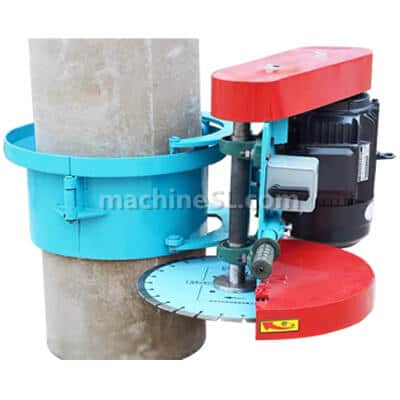
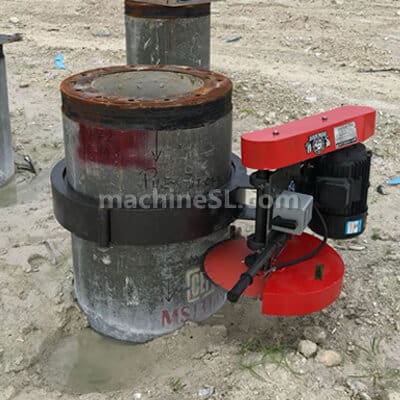
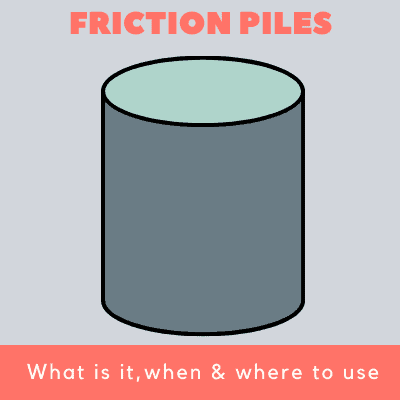

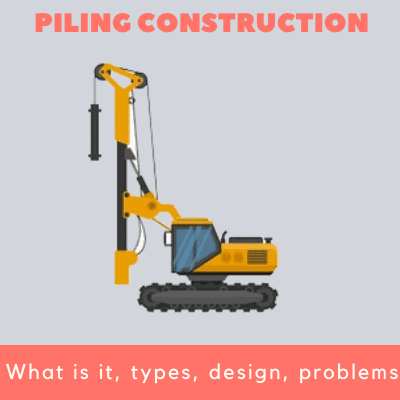
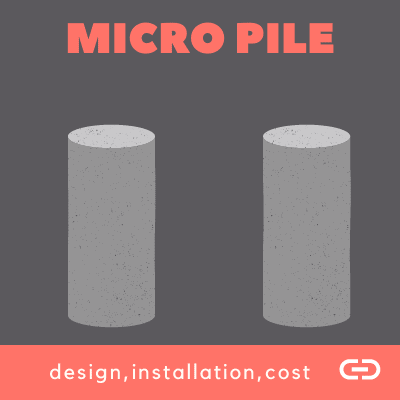
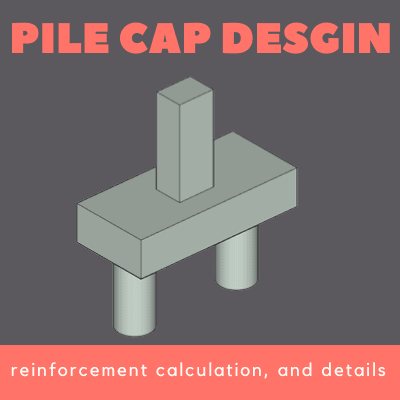
Leave A Comment